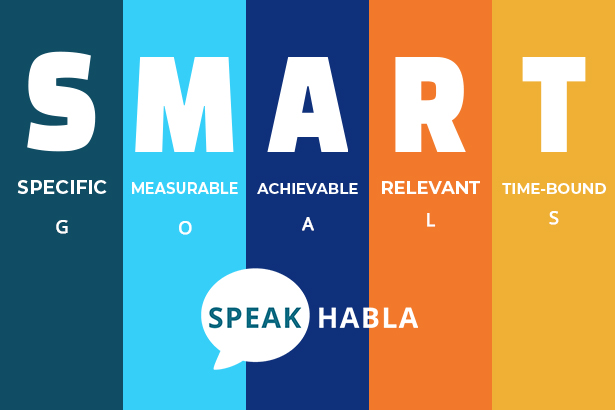With the New Year, it is very normal to reflect upon the past year’s successes and failures. If you are like me, you replay the decisions you made in your head, wondering if you chose wisely or foolishly, and trying to somehow measure whether or not you were successful in achieving the goals you set for yourself last year at this same time. Honestly, it is pretty difficult to measure the personal and professional goals I set for myself over a year ago. This year, I have decided to try something different. I am going to create SMART GOALS.
What are SMART GOALS?

I am going to try using this acronym to guide my goals to completion. I am eager to try this and I have high hopes for success. I am going to take vague and general goals and turn them into specific and actionable ones. Let’s try this together.
S represents SPECIFIC—Next year, I want to improve my Spanish. I want to move from an A2 level to a B1 level. This is a very specific goal. I did not say I wanted to learn a new language, I was specific with the language and also specific with the level. Not only do I want to improve my Spanish, but I am setting a measurable benchmark within my specific goal.
M represents Measurable. According to Cambridge and the Common European Framework for language, it will take approximately 300 hours for me to achieve a B1 level of Spanish. Understanding this benchmark will help me analyze the success or failure of my goal. Your goals should have some sort of objective way to measure them—whether that’s a deadline, a number, a percent change, or some other measurable element. Based on the amount of time I have to dedicate to learning Spanish, I estimate that it will take 1.5 years for me to get to a B1 level of Spanish.
A represents Achievable. You don’t want your goals to be simple to reach, but you also don’t want to set them so high that you can’t possibly reach them. I need to learn Spanish to compete in my industry. I cannot expect to be fluent in Spanish by the end of the month if I am only at an A2 level now. That objective is simply unreachable. However, if I try to spend 20 minutes every day learning through music, movies, and online apps, and I attend Spanish classes a few hours a week, regularly practicing, my goals will be much more achievable.

R represents REALISTIC. If you are not realistic, then you are going to set yourself up for failure. My goal of learning to speak Spanish by setting 20 minutes aside each day to practice Spanish and enroll in a Spanish class is both realistic and achievable. If I had set a goal to practice speaking Spanish for 4 hours every day, is not realistic for me or any working adult to be able to do that, even though it’s possible, it is not achievable.
T stands for Time-bound. Every time we set a goal for ourselves, we need to set a time limit in the form of a firm deadline. Deadlines are crucial to creating goals because without a deadline, it’s easy to brush it off. Deadlines create accountability.
I came across a great article by Stevens & Tate Marketing about SMART GOALS, and he included many great examples of how to set these goals.
If you want to try something different this year that will help you both personally and professionally, why not give SMART goals a shot? I will let you know how it goes!





0 Comments